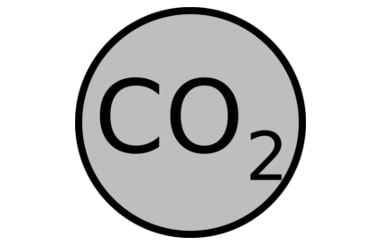Carbon dioxide crosses 400 ppm limit in atmosphere!
Q. The World Meteorological Organisation on 24th Oct 2016 released the GHG bulletin, according to which the average level of CO2 in the atmosphere across the globe passed which limit in 2015?- Published on 26 Oct 16a. 200 ppm
b. 300 ppm
c. 450 ppm
d. None of the above
ANSWER: None of the above

The World Meteorological Organisation on 24th Oct 2016 released the annual GHG bulletin
- As per the bulletin, the average level of CO2 in the atmosphere across the globe passed 400 parts per million in 2015
- The statistics released by the WMO points to the damage of the rising CO2 levels and the impact of climate change
- The WMO GHG bulletin reports on atmospheric concentrations of GHG
- CO2 accounted for 65% of the radiative force by long-lived GHG
- The pre-industrial level of 278 ppm represented a balance between the atmosphere, oceans and biosphere
- Human activities have altered the balance and in 2015, globally averaged levels were 144 percent of pre-industrial levels
- In 2015, the global annual average concentration of CO2 reached 400 ppm
- The increase of CO2 from 2014–2015 was larger than the previous year and the average over the past 10 years
- Reducing the capacity of vegetation to absorb the CO2 that powerful, El Nino has led to rising CO2 emissions from forest fires
- Methane is the second most important long lived GHG and contributes to 17 percent of radiative forcing
- Atmospheric methane has reached a new high of 1845 parts per billion and is now 256 percent of the pre-industrial level
- N2O is emitted into the atmosphere from both natural (about 60 percent) and anthropogenic sources (approximately 40 percent) including oceans, soil, biomass burning, fertiliser use and numerous industrial processes.
- Its atmospheric concentration in 2015 was about 328 pp.
- This is 121 percent of pre-industrial levels
- It also plays an important role in the destruction of the stratospheric ozone layer which protects us from harmful UV rays of the sun
- The World Meteorological Organisation is an intergovernmental organisation with a membership of 191 member states and territories
- It originated from the International Meteorological Organisation which was founded in the 1870s
- It was established in the 1950s
- It became the specialised agency of the United Nations for meteorology (weather and climate), operational hydrology and related geophysical sciences
- It is headquartered in Geneva, Switzerland
- It is a member of the UN Development Group